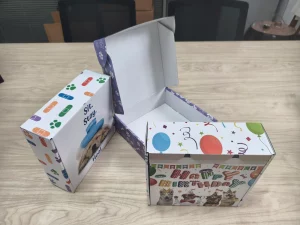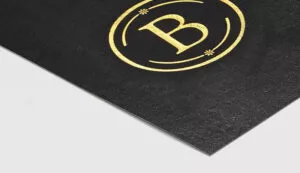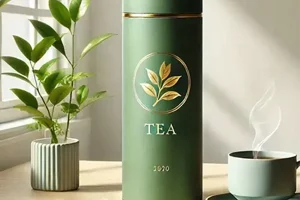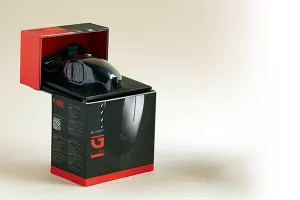I sometimes worry if my packaging can protect products while still looking good. I feel unsure about the difference between corrugated and regular cardboard when choosing the best option.
Corrugated boxes have a fluted inner layer that adds strength, while regular cardboard is typically a single-layer paperboard. This fluting helps corrugated boxes support heavier loads and protect items better.

Let’s explore corrugated and cardboard packaging in detail. We’ll see how corrugated sheets compare with flat sheets, discover the advantages of corrugated boxes, and find out how single and double corrugated cardboard differ.
Is a corrugated sheet better than a flat sheet?
I sometimes ask myself if a simple, flat sheet is enough, or if a corrugated layer offers superior performance for packaging fragile or heavy goods.
A corrugated sheet generally offers better protection due to its fluted middle layer. It absorbs impact, reduces damage risk, and manages heavier loads more effectively than a flat sheet.

When we look at a corrugated sheet, we see a three-part construction: an inside liner, a fluted medium, and an outside liner. These layers work together to create a sort of sandwich of protection. The fluted part is the wavy layer in the middle. That design is not just for appearance. It serves to distribute weight and absorb shocks. For example, if I stack many boxes on top of each other during shipping or in storage, the fluted layer1 helps the packaging resist compression. This means the package supports heavier items without collapsing or crushing as easily.
Flat sheet cardboard, on the other hand, is usually a single layer of paperboard. It’s suitable for lightweight items or immediate use, like folders or cereal boxes, but it lacks the structural rigidity of corrugated material. If I try to ship something fragile in a flat sheet box, that box might tear or compress during transit. The single-layer design doesn’t handle impact nearly as well. That can lead to damaged products, frustrated customers, and higher return rates. In my experience, the difference is obvious when I handle both materials side by side. The corrugated feels sturdier in my hands.
Another aspect to think about is cost and environmental impact. Because corrugated sheets are efficient at protecting goods, businesses can sometimes use less filler or protective wrapping inside. This might cut shipping weight and reduce the use of materials like bubble wrap or foam peanuts. Many corrugated sheets2 also come from recycled fibers, making them a more eco-friendly option than some other types of packaging. Meanwhile, flat sheet cardboard is also recyclable, but it’s generally less suitable for reuse in heavy-duty applications.
Corrugated sheets can be customized for thickness and flute profile. A certain flute profile can handle more weight. Another might be more suitable for printing or complex folding designs. This flexibility means brands can pick a level of durability and design that fits their product type. If someone is shipping electronics, they might want a thicker, sturdier flute profile. If the item is a pillow or a set of T-shirts, perhaps a lighter flute is sufficient. In contrast, a flat sheet is pretty static: you have one thickness, one level of rigidity, and fewer options for customizing interior protection.
So, is a corrugated sheet better than a flat sheet? In many scenarios, yes. Corrugated tends to be the go-to choice for shipping and storing heavier or delicate goods, offering structural strength and reliable protection. Flat sheet cardboard does have uses, like for smaller, lightweight items or typical retail displays, but for serious shipping needs, corrugated stands out. The bottom line is that the fluted layer in corrugated is a game-changer when it comes to safeguarding what’s inside. That difference can translate into fewer damaged products and more satisfied customers, which is always a plus in my book.
What are the advantages of corrugated boxes?
I want to ensure that every package I send meets a high standard of durability and brand appeal. Corrugated boxes seem to be a solid choice, but what specific benefits do they offer?
Corrugated boxes are lightweight yet strong. They protect products, are cost-effective, and can be customized to reflect a brand’s image, making them a top pick for shipping and retail.

Corrugated boxes combine strength, versatility, and affordability, which is why they remain one of the most popular packaging solutions around the globe. A primary advantage is their ability to handle diverse product weights and shapes. The fluted core of corrugated cardboard acts like a cushion, absorbing shocks and impacts during transit. This helps preserve the quality of items from the moment they leave the factory to the time they arrive at a store or a customer’s doorstep.
Another key advantage is cost-effectiveness. Corrugated material is relatively inexpensive compared to alternatives like molded plastic. Because corrugated cardboard is widely available, I find that manufacturers can produce these boxes in large quantities at a lower per-unit price. Also, since the boxes are often shipped flat to the user, storage and transportation of empty packaging are simpler and cheaper. Once the box is needed, it is folded along pre-scored lines, speeding up the packing process. This efficiency helps businesses reduce overhead costs, especially if they handle a high volume of shipments.
Corrugated boxes also make branding easier. They serve as a blank canvas for printing logos, taglines, or full-color images. This is a great opportunity to create a cohesive brand presentation that matches online or in-store marketing materials. It transforms a simple box into a marketing tool that can attract attention and heighten perceived product value. Customers often associate a neatly printed krabice z vlnité lepenky with quality and professionalism, which can help build trust and loyalty.
Environmental friendliness is another advantage. Many corrugated boxes are made from recycled fibers and can be recycled again, making them a sustainable choice. They typically break down faster in a landfill compared to plastic packaging. Some corrugated solutions even use biodegradable inks or coatings. For me, prioritizing eco-friendly packaging resonates with customers who seek sustainable options. This can strengthen a brand’s reputation and reduce its environmental footprint.

Finally, corrugated boxes are flexible. Manufacturers can create them in various styles, from regular slotted containers to die-cut shapes that fit unique products. This flexibility allows businesses to design boxes that optimize space usage and protect the items inside. Incorporating custom inserts or multiple flaps can keep contents from shifting around. The thickness of the corrugated layers can also be changed to handle heavier or fragile goods. If I want a premium feel, I can pick a specific flute size that prints better or that folds more smoothly.
In short, corrugated boxes offer an unbeatable mix of protection, low cost, branding potential3, and eco-friendliness. They help reduce product damage, enable memorable unboxing experiences, and align with modern consumer demands for sustainability. From small artisan shops to global corporations, corrugated has become an industry mainstay for good reason.
What is the difference between single and double corrugated cardboard?
I sometimes wonder if single-layer corrugated is enough or if double corrugated is more reliable. Deciding on the right thickness can influence cost, weight, and protection.
Single corrugated has one fluted layer between two liners, while double corrugated has two fluted layers and three liners. Double corrugated provides greater strength but may weigh more and cost extra.
Single corrugated cardboard, often referred to as single-wall, is the most common type of corrugated packaging material. It consists of one layer of fluting sandwiched between two flat layers of paper (the inside and outside liners). This design offers a balance of strength and lightness. If I’m shipping items that are moderately heavy or slightly fragile, single corrugated works quite well. It can handle the occasional bump or stack, and it’s fairly cost-effective.
Double corrugated cardboard, or double-wall, has two fluted layers in the middle, separated by an extra flat liner. The structure is liner–flute–liner–flute–liner, which makes the board thicker and sturdier than single corrugated. This design is more resistant to crush and punctures, making it suitable for heavier or more delicate items. In my experience, double corrugated is helpful for shipping bulky products that might get stacked in warehouses or on delivery trucks. The extra layer also aids in absorbing shocks, giving me peace of mind about breakable or high-value goods.
There are trade-offs to consider. The added thickness of double corrugated means heavier material. This can lead to increased shipping costs, which might affect a business’s budget, especially if they ship large volumes. Also, heavier boxes can be more cumbersome to lift or store. On top of that, double corrugated typically costs more to produce, so the box unit price can be higher. If I’m shipping lightweight, unbreakable products, using double corrugated might be overkill. I would pay more for protection I don’t truly need.
Single corrugated is enough for daily shipping of standard goods like clothes, books, or packaged foods. Double corrugated, on the other hand, is ideal when shipping products like ceramics, electronics, or items that can’t risk breakage. If something is especially fragile, some manufacturers even use triple corrugated for maximum cushioning, though that’s less common in standard retail.
The difference also matters for sustainability goals4. While both single and double corrugated can be made from recycled materials, heavier boards often use more raw material. That can mean a bigger environmental footprint, though they remain more eco-friendly than plastic or polystyrene packaging. If I’m concerned about reducing resources, single corrugated might be the greener option, provided it offers adequate protection for my products.
So deciding between single and double corrugated boils down to weight, fragility, budget, and shipping conditions. If my products are relatively light and sturdy, single corrugated is likely enough. If they’re heavier, more fragile, or subjected to rough handling, I might pick double corrugated for peace of mind. The extra cost and weight might be offset by fewer damage claims and higher customer satisfaction, which can be well worth it in the long run.
Conclusion
Corrugated boxes stand out because of their fluted strength, while regular cardboard is typically thinner. Choosing the right type, thickness, and style helps ensure reliable, brand-enhancing packaging.
-
Understanding the fluted layer’s role can enhance your knowledge of packaging efficiency and protection. ↩
-
Explore the benefits of corrugated sheets to make informed decisions for your packaging needs. ↩
-
Discover strategies to leverage corrugated packaging for effective branding, making your products stand out in a competitive market. ↩
-
Discover how choosing the right type of corrugated cardboard can align with sustainability goals and reduce environmental impact. ↩








